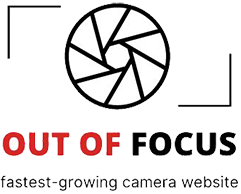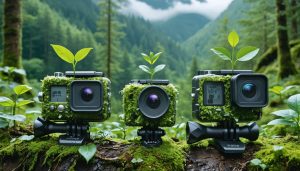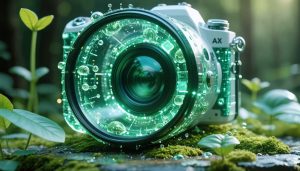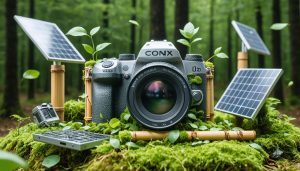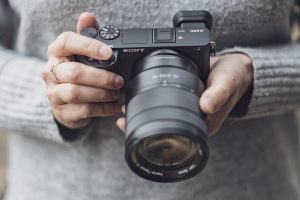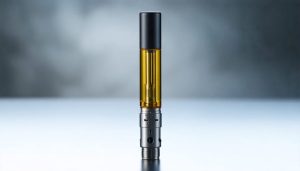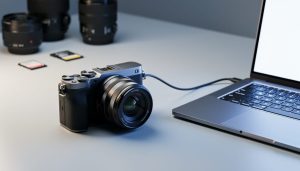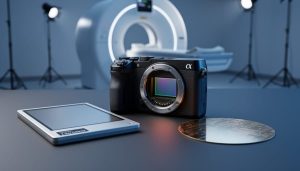
Transform your digital photography studio into an eco-friendly workspace by implementing sustainable photography practices alongside your green screen setup. Replace disposable vinyl backdrops with durable fabric alternatives made from recycled materials, reducing both waste and long-term costs. Install energy-efficient LED lighting systems that consume up to 75% less power while providing superior color accuracy for your chroma key work. Configure your camera’s white balance and exposure settings specifically for green screen shooting to minimize post-processing power consumption and extend your equipment’s lifespan.
Digital green screen photography stands at the intersection of technical innovation and environmental responsibility. Modern cameras equipped with advanced sensors and processing capabilities enable pristine key extraction while consuming minimal power. By combining these technological advantages with conscious material choices and optimized workflow processes, photographers can create stunning visual effects while maintaining a smaller carbon footprint.
This practical approach to green screen photography not only delivers professional-grade results but also positions your studio at the forefront of the industry’s shift toward sustainability, appealing to increasingly eco-conscious clients and setting new standards for responsible creative production.
Eco-Friendly Green Screen Materials
Sustainable Fabric Options
When setting up your green screen studio, choosing sustainable fabric options can significantly reduce your environmental impact while maintaining professional results. Muslin made from organic cotton is an excellent eco-friendly choice, as it’s biodegradable and produced without harmful pesticides. These natural cotton screens can be composted at the end of their lifecycle, making them a truly sustainable option.
Hemp-based fabrics are gaining popularity in the green screen community due to their durability and minimal environmental footprint. Hemp grows quickly without pesticides and requires less water than conventional cotton. The material’s natural resistance to mold and mildew also extends its lifespan, reducing the need for frequent replacements.
Recycled polyester fabrics, created from post-consumer plastic bottles, offer another sustainable alternative. While not biodegradable, these materials give new life to existing plastic waste and can be recycled again when no longer needed. Many manufacturers now offer these eco-conscious options with the same color consistency and light-absorbing properties as traditional synthetic screens.
For smaller setups, bamboo-based fabrics provide an excellent balance of sustainability and functionality. Bamboo is rapidly renewable and requires minimal processing to transform into fabric. These screens typically have a slightly different texture than traditional options but perform equally well in most digital photography applications.
Remember to look for certifications like GOTS (Global Organic Textile Standard) or Oeko-Tex when purchasing your sustainable green screen fabric to ensure legitimate environmental claims.
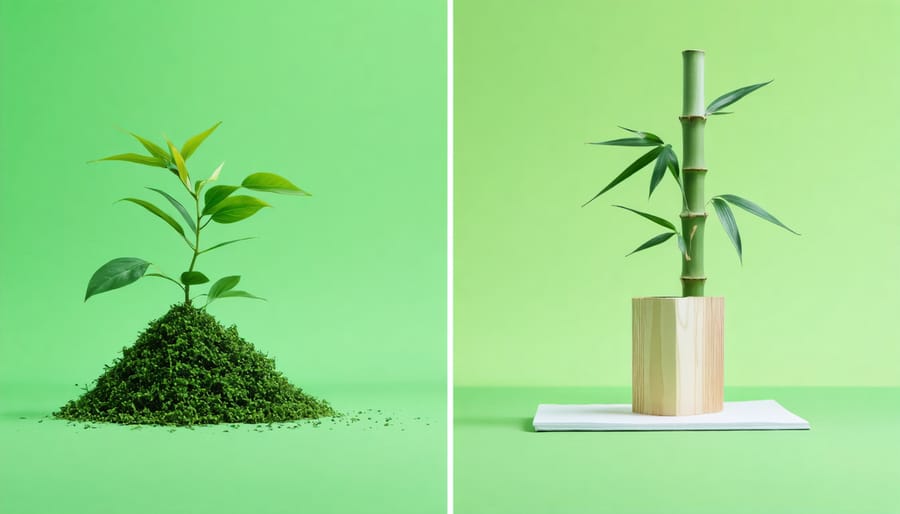
Natural Paint Alternatives
For environmentally conscious photographers, creating a green screen doesn’t have to involve harsh chemicals or synthetic materials. Natural paint alternatives offer a sustainable approach while maintaining the effectiveness of your setup. One excellent option is milk paint, which combines milk protein (casein) with natural pigments to create a rich, matte finish perfect for chroma keying. This biodegradable alternative provides excellent coverage and can be tinted to the exact shade of green needed for your digital work.
Clay-based paints offer another eco-friendly solution, providing excellent opacity and a consistent finish that works well with digital cameras. These paints are completely non-toxic and can be easily disposed of without environmental concerns. When mixed with natural green pigments like spirulina or chlorophyll, they create an ideal surface for green screen effects.
Plant-based paints made from vegetable dyes and natural binders present a third option. These can be created using ingredients like aloe vera gel as a binder and combining it with natural green colorants. While these may require more frequent touch-ups than conventional paints, they’re completely safe for both people and planet.
Remember to test your natural paint choice with your camera setup before completing the entire screen. The key is finding the right balance between eco-friendliness and technical performance. Many photographers report that natural alternatives perform just as well as synthetic options, especially when properly lit and exposed.
Energy-Efficient Lighting Solutions
LED Lighting Systems
LED lighting has revolutionized green screen photography by offering an energy-efficient and environmentally friendly alternative to traditional lighting setups. These modern lighting systems consume up to 80% less power than conventional tungsten or fluorescent lights while delivering exceptional color accuracy and consistent illumination – crucial factors for achieving clean green screen effects.
What makes LED lights particularly suitable for green screen work is their ability to provide even illumination without hot spots, which can be a common issue with traditional lighting. They generate minimal heat, making the shooting environment more comfortable for talent and reducing the need for energy-consuming cooling systems. This also means you can position the lights closer to your green screen without risking damage to the material.
Most professional LED panels now come with adjustable color temperature and brightness controls, allowing photographers to fine-tune their lighting setup with precision. Some advanced models even offer smartphone connectivity for remote adjustments, making it easier to maintain consistent lighting throughout your shoot.
When setting up LED lights for green screen photography, aim to position them at 45-degree angles to eliminate shadows and achieve uniform illumination. A typical setup might include two main lights for the screen itself and additional lights for your subject. Look for LED panels with high CRI (Color Rendering Index) ratings above 95 to ensure accurate color reproduction.
Beyond the environmental benefits, LED lights also offer practical advantages like longer lifespan (typically 50,000+ hours), durability, and lower maintenance costs. For photographers looking to create a more sustainable studio setup, LED lighting systems represent a smart investment that benefits both the planet and their bottom line.
Natural Light Integration
Natural light can be a powerful ally in green screen photography, offering a sustainable and cost-effective lighting solution when properly managed. Learning to optimize natural lighting can transform your green screen results while reducing your studio’s energy footprint.
The key to successful natural light integration lies in positioning your green screen relative to windows or outdoor spaces. North-facing windows typically provide the most consistent, diffused light throughout the day, creating even illumination across your screen. For best results, position your screen perpendicular to the window, allowing light to fall evenly across its surface.
Timing plays a crucial role in natural light photography. Early morning and late afternoon offer softer, more manageable light compared to harsh midday sun. Consider scheduling your shoots during these golden hours to achieve more flattering results and minimize unwanted shadows.
However, natural light presents unique challenges. Cloud coverage can create sudden exposure shifts, and changing sun positions may require frequent camera adjustments. Combat these issues by using reflectors to bounce light back onto shadowed areas and diffusers to soften intense direct sunlight. A semi-transparent white curtain can serve as an excellent diffuser while maintaining the eco-friendly spirit of your setup.
Remember to monitor your histogram regularly when working with natural light, as subtle changes in outdoor conditions can affect your exposure values. Keep your green screen well-tensioned and clean, as natural light tends to highlight any imperfections more prominently than artificial lighting.
By mastering natural light techniques, you’ll not only create beautiful, sustainable content but also develop a deeper understanding of light behavior that will enhance all aspects of your photography.
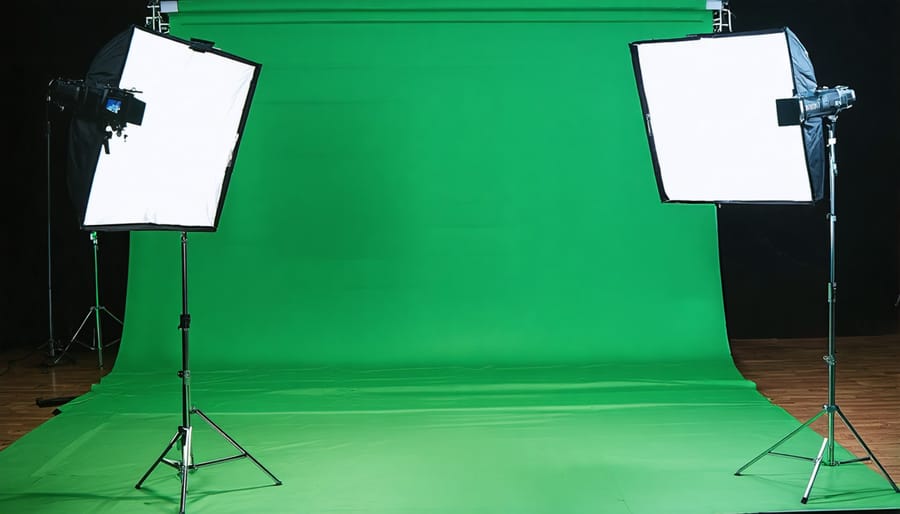
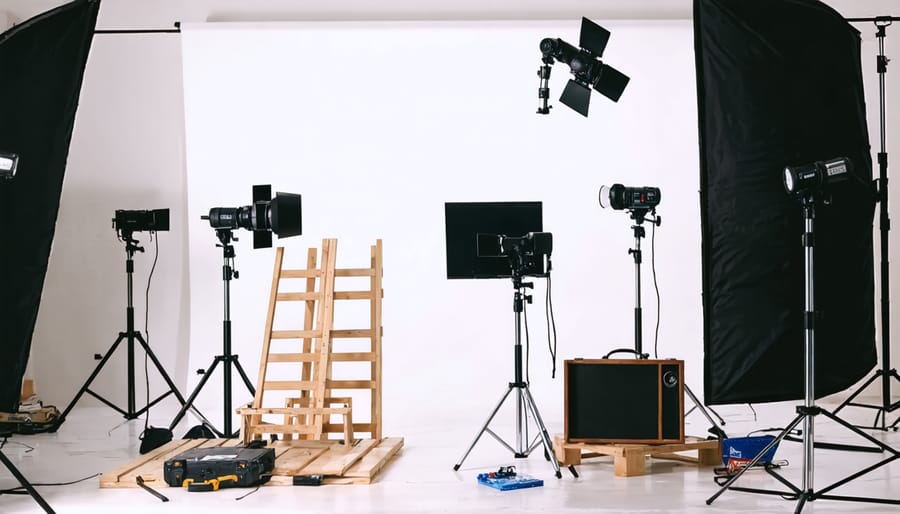
Sustainable Studio Setup
Recycled Equipment Options
Creating an effective green screen setup doesn’t require buying new, expensive equipment. In fact, repurposing existing materials not only saves money but also contributes to eco-friendly photography equipment practices. Let’s explore some creative ways to build your studio setup using recycled materials.
Old microphone stands make excellent supports for your green screen fabric. These sturdy metal stands often gather dust in garages or music studios but can be easily adapted with simple clamps or clips. Similarly, retired curtain rods can be repurposed as horizontal supports for your backdrop.
For lighting stands, consider using old camera tripods. Those wobbly tripods that no longer provide stable camera support can find new life holding lights. PVC pipes from home renovation projects can be transformed into versatile frame systems – just clean them thoroughly and paint them matte black to avoid unwanted reflections.
Need weight bags to stabilize your stands? Fill old canvas bags or worn-out camera bags with sand or rice. These homemade sandbags work just as effectively as commercial options. For clips and clamps, repurposed spring-loaded clothespins work wonderfully to secure your green screen fabric, while old binder clips from your office supplies can serve as cable management tools.
Remember to check local photography groups or online marketplaces for second-hand equipment that others might be discarding. One photographer’s unwanted gear could become an essential part of your sustainable studio setup.
Waste Reduction Strategies
Creating an eco-friendly green screen setup starts with implementing smart waste reduction techniques from the very beginning. Instead of disposable green screens, invest in durable fabric materials that can withstand repeated use and cleaning. Look for chromakey fabrics made from recycled materials or sustainable sources, which offer excellent color consistency while minimizing environmental impact.
Consider creating a modular setup that allows you to adjust the screen size according to your shooting needs, preventing the waste of excess material. When storing your green screen, use proper folding techniques and protective covers to extend its lifespan and reduce the need for frequent replacements.
For lighting setups, opt for energy-efficient LED lights that not only reduce power consumption but also generate less heat, potentially extending the life of your green screen material. Choose rechargeable batteries for portable equipment, and establish a proper recycling system for any electronic waste.
Digital files can contribute to environmental impact through server storage. Implement a robust file management system, regularly archiving and deleting unnecessary takes. Consider using local storage solutions instead of cloud services for projects that don’t require immediate sharing, reducing energy consumption from data centers.
When upgrading equipment, donate or sell functioning gear to other photographers rather than disposing of it. This creates a circular economy within the photography community while preventing electronic waste.
Digital Alternatives
In today’s digital age, photographers have access to powerful software solutions that can dramatically reduce the need for physical green screens while achieving similar or even superior results. Advanced image editing programs like Photoshop and Luminar AI now offer sophisticated background removal tools that use artificial intelligence to separate subjects from their backgrounds with remarkable precision.
One of the most significant advantages of these digital alternatives is their minimal environmental impact. Instead of purchasing and storing large pieces of fabric or vinyl, photographers can achieve professional results through computational photography techniques. Many modern cameras even include built-in background replacement features that work in real-time, eliminating the need for post-processing in some cases.
Mobile apps have also revolutionized this space. Applications like PhotoRoom and Remove.bg provide instant background removal capabilities right from your smartphone, making green screen effects accessible to everyone while reducing material consumption. These solutions are particularly valuable for content creators who work in small spaces or frequently change locations.
For video work, software like DaVinci Resolve and Adobe After Effects offer powerful rotoscoping and keying tools that can create clean cutouts without physical screens. Some newer solutions even use depth-sensing technology to create authentic-looking depth maps, allowing for natural-looking background replacement without any physical props.
While these digital alternatives may require an initial investment in software or subscription services, they often prove more cost-effective and environmentally friendly in the long run. They eliminate the need for storage space, reduce transportation requirements, and prevent the eventual disposal of worn-out physical screens. Additionally, these tools often provide more flexibility in post-production, allowing photographers to experiment with different backgrounds and effects without additional resource consumption.
However, it’s worth noting that digital solutions may require more processing power and electricity. To maintain an eco-friendly approach, consider using energy-efficient devices and renewable energy sources when possible.
As we’ve explored throughout this article, creating an environmentally conscious photography setup doesn’t mean compromising on quality or creativity. By choosing energy-efficient lighting solutions, opting for sustainable materials in your green screen setup, and implementing proper recycling practices for damaged equipment, you can significantly reduce your environmental footprint while maintaining professional results.
Remember that small changes can make a big difference. Using LED lights instead of traditional hot lights not only saves energy but also creates a more comfortable shooting environment. Selecting recycled or biodegradable materials for your green screen backdrop shows that sustainability and professional quality can go hand in hand.
Consider implementing a digital workflow to minimize paper waste, and always dispose of any chemical products responsibly. When upgrading your equipment, look for energy-efficient models and consider donating or properly recycling your old gear.
The future of photography lies in finding the perfect balance between technical excellence and environmental responsibility. By adopting these eco-friendly practices in your green screen setup, you’re not just creating amazing visual content – you’re also contributing to a more sustainable future for our industry.
Let’s continue to innovate and find new ways to make our photography practices greener while pushing creative boundaries. After all, capturing beautiful images shouldn’t come at the expense of our planet’s health.
